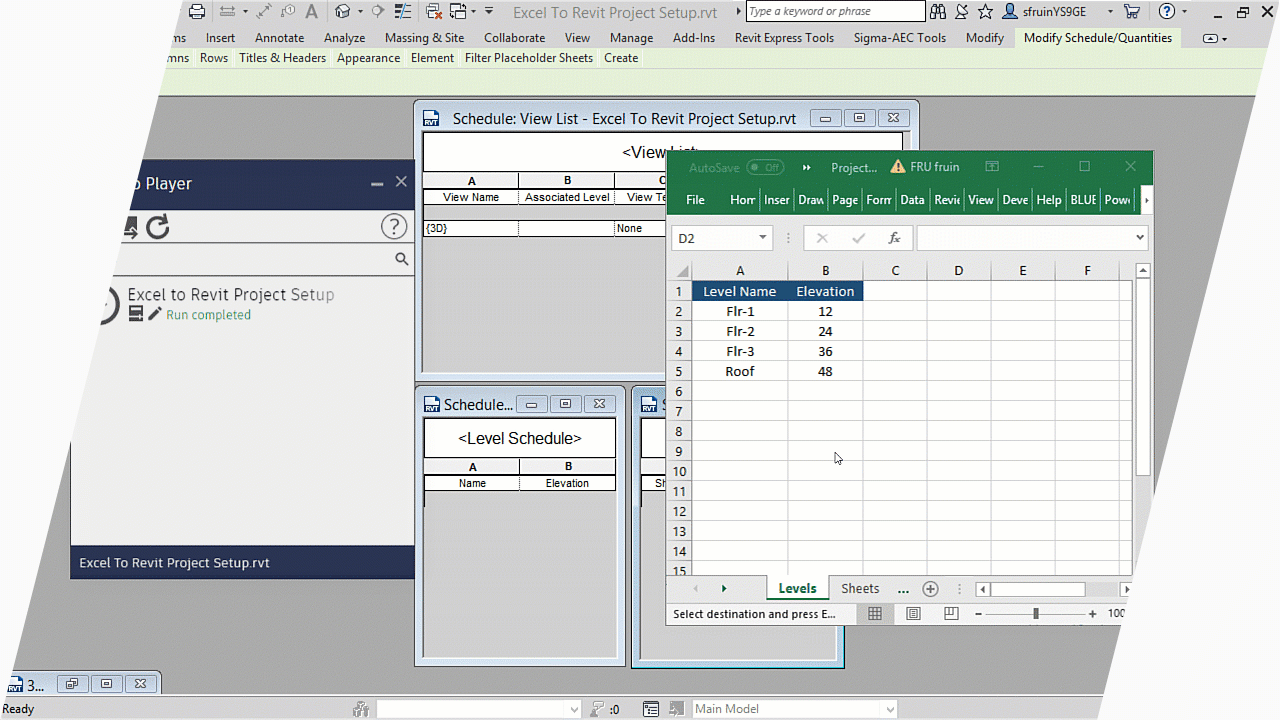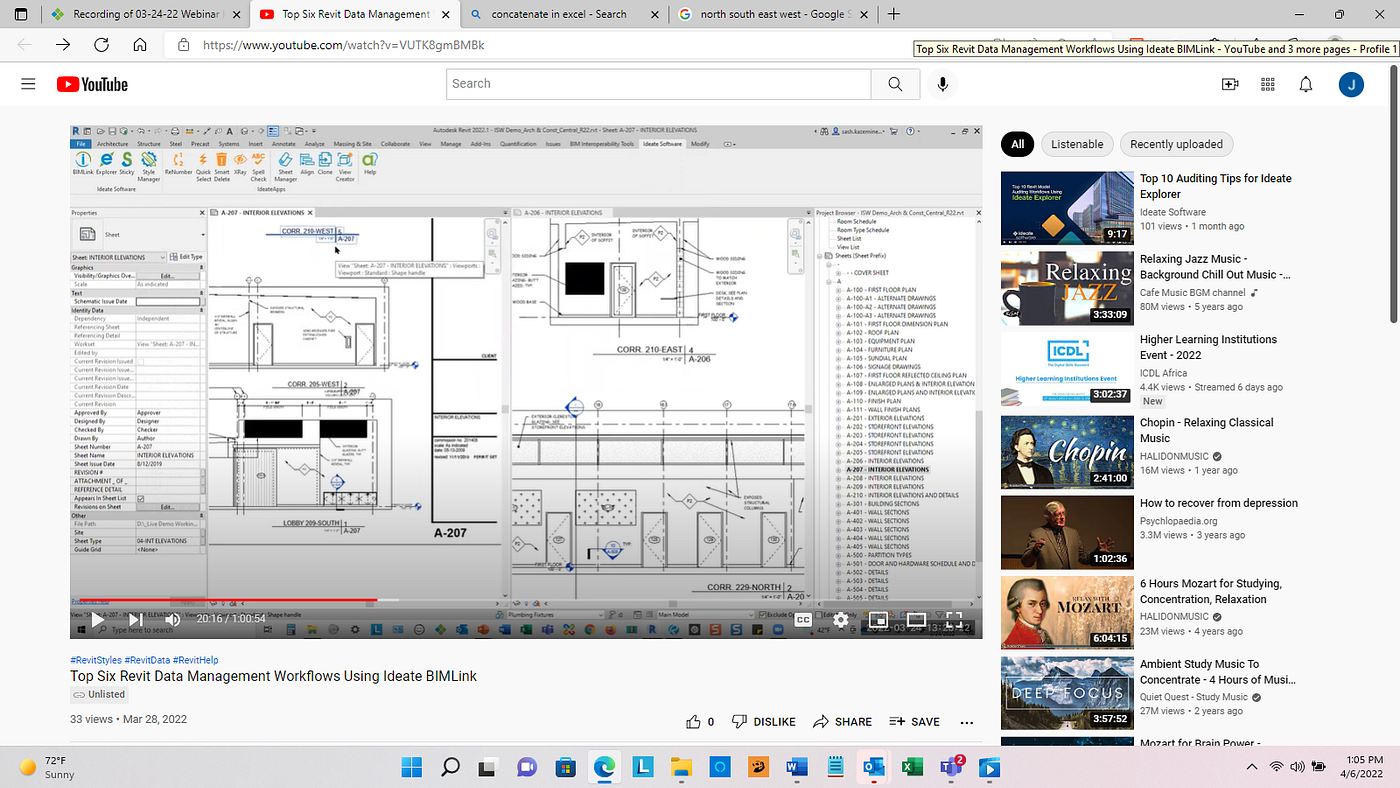Revit Tool Choice for Streamlined Modeling and Layout
Wiki Article
Mastering the Art of Data Combination: Just How to Seamlessly Import Excel Info Into Revit
Are you battling to import Excel files into Revit smoothly? Look no more! In this article, we will assist you via the procedure of mastering the art of data combination. Discover the value of smooth integration in Revit and explore the Excel file style for Revit combination. Prepare to prepare your Excel information easily and follow our detailed overview to import files into Revit. With our best practices, you'll achieve data combination success in no time at all. Allow's get going!Recognizing the Relevance of Information Assimilation in Revit
Recognizing the value of information combination in Revit is vital for smooth importing of Excel data. When you integrate data from Excel into Revit, it permits you to successfully manage and update details throughout the whole project. This combination ensures that your design and building and construction procedure is exact and updated.By incorporating information, you can conveniently import and update parameters, timetables, and even geometry in Revit. This eliminates the demand for hands-on data access, conserving you time and minimizing the danger of errors. With Revit's information combination capabilities, you can maintain uniformity and accuracy in your project, while likewise improving cooperation among employee.

Discovering the Excel Data Style for Revit Combination

In order to efficiently incorporate Excel data right into Revit, it is critical to make certain that the data is formatted correctly. This consists of appropriately identifying columns and rows, along with structuring the data in such a way that is compatible with Revit's data schema. Revit utilizes specific criteria and categories to arrange data, so it is essential to align the Excel information with these parameters to make certain a seamless assimilation.
Additionally, it is very important to note that Revit just sustains certain information types when importing from Excel. These include message, numbers, and dates. Any type of various other data kinds, such as solutions or conditional formatting, will certainly not be recognized by Revit and might cause problems throughout the integration procedure.
Preparing Your Excel Information for Seamless Import Into Revit
To make sure a smooth assimilation process, you'll require to effectively format and tag the columns and rows in your Excel data before importing it right into Revit. Due to the fact that it allows Revit to precisely analyze and arrange your data, this action is essential. Begin by analyzing your Excel data and determining which columns and rows consist of relevant info for your Revit task. Then, see to it to label each column with a descriptive and clear header. This will aid you and others easily comprehend the objective of each column and prevent confusion throughout the import procedure.Next, ensure that the information in each column is effectively formatted. If you have a column for dimensions, make certain that all measurements are constantly formatted in the exact same systems of measurement. Revit relies on regular format to precisely translate and import data.
Additionally, it is important to look for any kind of empty cells or disparities in your data. Revit might not have the ability to check out or import data from cells that are empty or have mistakes. It is suggested to evaluate your Excel information and clean up any incongruities before importing it into Revit.
Step-By-Step Overview to Importing Excel Files Into Revit
As soon as you've properly formatted and classified your Excel data, you can easily import it right into Revit by following this step-by-step overview. revit tools To begin, open Revit and navigate to the "Insert" tab. Click "Import CAD" and choose "Import Excel" from the dropdown menu. A brand-new window will certainly appear, asking you to find the Excel data you wish to import. Surf your computer and pick the Excel data, after that click "Open."Following, a dialog box will certainly appear, enabling you to customize the import setups. Right here, you can pick the worksheet you wish to import, specify the variety of cells to import, and pick the suitable systems for your information. Once you've made your options, click "OK" to proceed.
Revit will now show a sneak peek of your Excel data. Take a moment to examine the sneak peek and ensure that everything looks appropriate. If required, you can make changes to the import setups by clicking on the "Settings" button.
Finest Practices for Information Assimilation Success in Revit
See to it you follow these best methods to make sure effective assimilation of information in Revit. It is critical to arrange your information in Excel before importing it right into Revit. This means guaranteeing constant calling conventions, appropriate format, and precise data representation. Next, use Revit's built-in tools for data mapping. This will allow you to match the columns in your Excel file with the corresponding parameters in Revit. Be conscious of the devices and information kinds when mapping the information, as any type of inconsistencies can result in errors in the integration process.Another vital method is to regularly verify and update your data. In addition, make use of information validation devices within Revit to identify any type of mistakes or disparities in the incorporated data.
Last but not least, it is suggested to develop a clear workflow for information assimilation. This consists of specifying roles and duties, establishing a communication channel between staff member, and establishing a routine tempo for data updates and evaluations. By adhering to these best methods, you can make certain a successful and smooth integration of data in Revit, eventually boosting the efficiency and accuracy of your job.
Final Thought
In final thought, grasping the art of information integration is vital for seamless import of Excel files into Revit. Comprehending the value of information assimilation in Revit is the initial action towards effective assimilation.When importing information from Excel right into Revit, it is crucial to recognize the data style and exactly how it can impact the combination process (revit add ins). Revit makes use of certain specifications and classifications to organize data, so it is important to straighten the Excel data with these parameters to make certain a smooth integration
Be mindful of the devices and information kinds when mapping the information, as any kind of disparities can lead to mistakes in the combination process.
Additionally, make usage of data validation devices within Revit to recognize any type of errors or incongruities in the incorporated data.

Report this wiki page